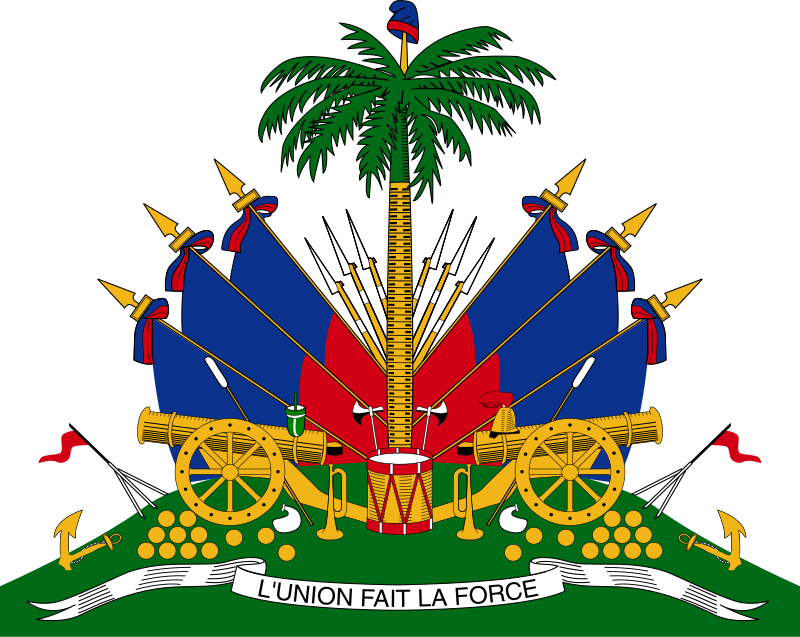Key Dates in Haiti’s History
Discover the pivotal moments that have shaped Haiti's rich history and heritage.

Key Dates in Haiti’s History
1492
Christopher Columbus lands and claims the island of Hispaniola for Spain. The Spanish build the New World’s first settlement at La Navidad on Haiti’s north coast.
1697
1791-1803
A slave rebellion is launched by the Jamaican-born Boukman leading to a protracted 13-year war of liberation against St. Domingue’s colonists and later, Napoleon’s army which was also assisted by Spanish and British forces. The slave armies were commanded by General Toussaint Louverture who was eventually betrayed by the French and subsequently exiled to France where he died.
1803
The Haitian blue and red flag was devised at Arcahaie, by taking the French tricolor, turning it clockwise and removing the white band. The Battle of Vertières in November marks the ultimate victory of the former slaves over the French.
1804
The hemispere’s second Republic is declared on January 1, 1804 by General Jean-Jacques Dessalines. Haiti, or Ayiti in Creole, is the name given to the land by the former Taino-Arawak people, meaning “mountainous country.”
1806
Emperor Jean-Jacques Dessalines is assassinated.
1807-1820
Civil war racks the country, which divides into the northern kingdom of Henri Christophe and the southern republic governed by Alexandre Pétion. Faced with a rebellion by his own army, Christophe commits suicide, paving the way for Jean-Pierre Boyer to reunify the country and become President of the entire republic in 1820.
1821
President Boyer invades Santo Domingo following its declaration of independence from Spain. The entire island is now controlled by Haiti until 1844.
1838
France recognizes Haitian independence in exchange for a financial indemnity of 150 million francs. Most nations including the United States shunned Haiti for almost forty years, fearful that its example could stir unrest there and in other slaveholding countries. Over the next few decades Haiti is forced to take out loans of 70 million francs to repay the indemnity and gain international recognition.
1862
The United States finally grants Haiti diplomatic recognition sending noted abolitionist Frederick Douglass as its Consular Minister.
1915
President Woodrow Wilson orders the U.S. Marines to occupy Haiti and establish control over customs-houses and port authorities. The Haitian National Guard is created by the occupying Americans. The Marines force peasants into corvée labor building roads. Peasant resistance to the occupiers grows under the leadership of Charlemagne Péralte, who is betrayed and assassinated by Marines in 1919.
1934
The U.S. withdraws from Haiti leaving the Haitian Armed Forces in place throughout the country.
1937
Thousands of Haitians living near the border of the Dominican Republic are massacred by Dominican soldiers under the orders of President General Trujillo.
1957
After several attempts to move forward democratically ultimately fail, military controlled elections lead to victory for Dr. François Duvalier, who in 1964 declares himself President-for-Life and forms the infamous paramilitary Tonton Makout. The corrupt Duvalier dictatorship marks one of the saddest chapters in Haitian history with tens of thousands killed or exiled.
1971
“Papa-Doc” Duvalier dies in office after naming his 19 year-old son Jean-Claude as his successor.
1972
The first Haitian “boat people” fleeing the country land in Florida.
1976
Widespread protests against repression of the nation’s press take place.
1970z-1980s
“Baby-Doc” Duvalier exploits international assistance and seeks to attract investment leading to the establishment of textile-based assembly industries. Attempts by workers and political parties to organize are quickly and regularly crushed.
1980
Hundreds of human rights workers, journalists and lawyers are arrested and exiled from the country.
1981
International aid agencies declare Haitian pigs to be carriers of African Swine Fever and institute a program for their slaughter. Attempts to replace indigenous swine with imported breeds largely fail.
1983
Pope John Paul II visits Haiti and declares publicly that, “Things must change here.”
1984
Over 200 peasants are massacred at Jean-Rabel after demonstrating for access to land. The Haitian Bishops Conference launches a nation-wide (but short-lived) literacy program. Anti-government riots take place in all major towns.
1985
Massive anti-Government demonstrations continue to take place around the country. Four schoolchildren are shot dead by soldiers, an event which unifies popular protest against the régime.
1986
Widespread protests against “Baby Doc” lead the U.S. to arrange for Duvalier and his family to be exiled to France. Army leader General Henri Namphy heads a new National Governing Council.
1987
A new Constitution is overwhelmingly approved by the population in March. General elections in November are aborted hours after they begin with dozens of people shot by soldiers and the Tonton Makout in the capital and scores more around the country.
1988
Military controlled elections – widely abstained from – result in the installation of Leslie Manigat as President in January. Manigat is ousted by General Namphy four months later and in November General Prosper Avril unseats Namphy.
1989
President Avril, on a trade mission to Taiwan, returns empty-handed after grassroots-based democratic sectors inform Taiwanese authorities that the Haitian nation will not be responsible for any contracts agreed to by Avril. Avril orders massive repression against political parties, unions, students and democratic organizations.